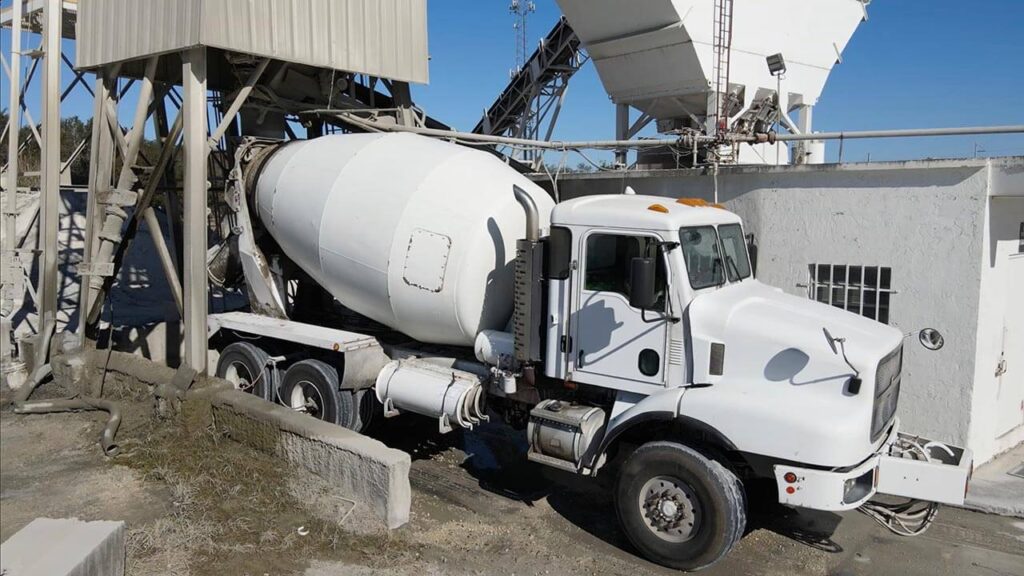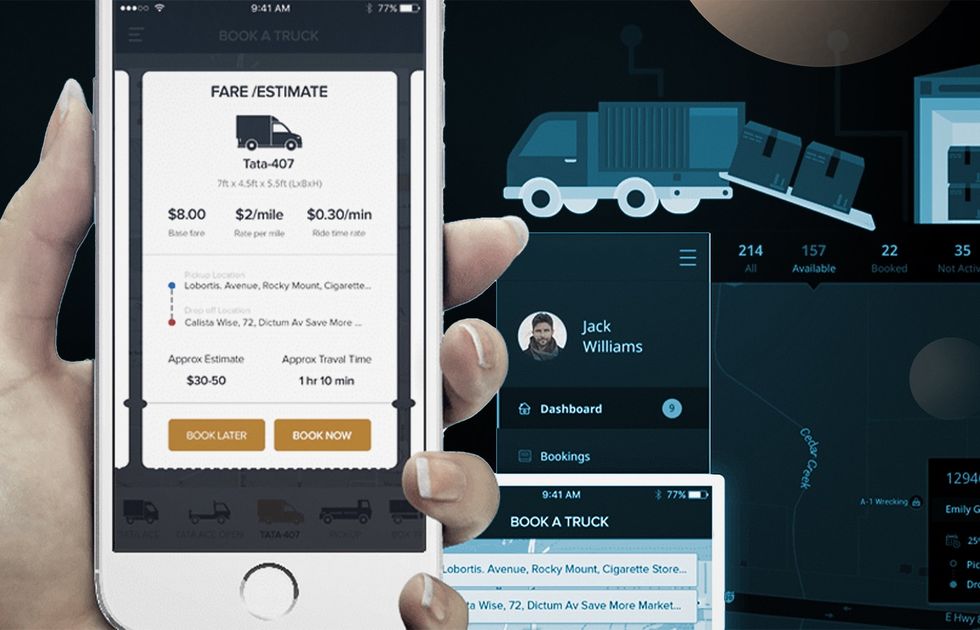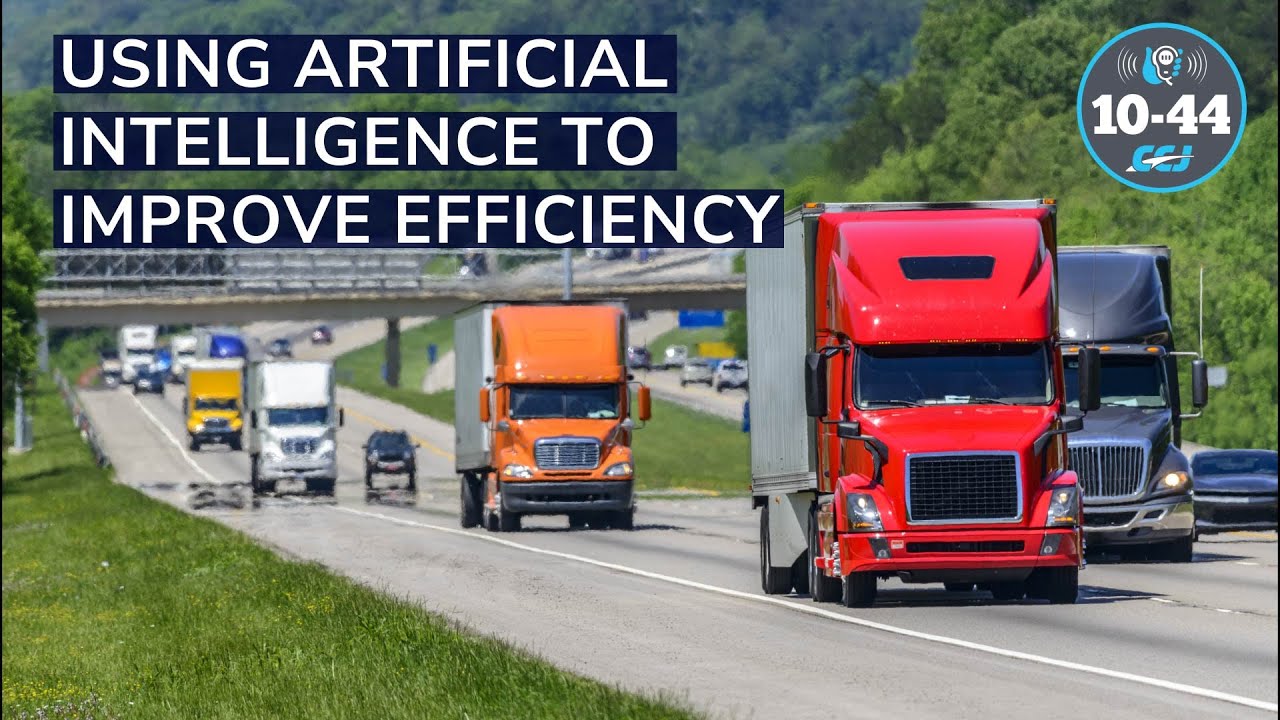Aggregate Dispatch Software streamlines the delivery process of construction materials. It optimizes scheduling and tracks shipments in real-time.
Managing logistics within the construction industry can be complex due to the vast array of materials and the necessity for timely deliveries. This software directly tackles these challenges, offering solutions that integrate with existing systems to ensure that materials like gravel, sand, and concrete are dispatched efficiently to various job sites.
It enhances productivity by automating dispatch tasks, which reduces errors and saves time. The software also often includes features for route planning, order management, and reporting, making it an essential tool for suppliers looking to improve their supply chain operations and customer satisfaction. Its real-time tracking capability allows for immediate adaptation to any logistical changes, minimizing delays and maintaining project schedules.
The Evolution Of Logistics Technology
Logistics technology has transformed remarkably from the analog systems of the past to today’s digital, interconnected world. This evolution has empowered businesses with unprecedented efficiency and accuracy in the movement and tracking of goods. Aggregate Dispatch Software now stands at the forefront of this progress, leveraging the latest tech innovations to streamline the complex processes within the logistics industry. In the following sections, we will explore how logistics systems evolved and the significant impact modern technology has had on the industry.
Historical Perspective On Logistics Systems
The journey of logistics technology began with simple, manual methods of inventory tracking and route planning. Paper ledgers were once the backbone of order management and warehouse operations.
- Manual inventory tracking: Relied heavily on physical counts and written records.
- Route planning: Dependent on physical maps and individual driver knowledge.
- Paper ledgers and documentation: All logistics information was recorded by hand.
These practices paved the way for the first wave of technology in the form of computerized databases and basic electronic communication devices, setting the stage for the sophisticated systems used today.
The Impact Of Modern Technology
Modern logistics has been reshaped by a suite of advanced digital solutions, dramatically enhancing efficiency and transparency across the supply chain. Among these innovations, Aggregate Dispatch Software plays a pivotal role in optimizing operations.
| Technological Advancement | Benefits |
|---|---|
| Real-time tracking | Live updates and location of goods for enhanced planning and customer satisfaction. |
| Automated matching | Swift pairing of loads with the best-suited carriers for improved efficiency. |
| Data analytics | Actionable insights for decision-making and forecasting demand. |
| Integrated communication | Seamless interaction between stakeholders, reducing errors, and saving time. |
These advancements not only streamline operations but also reduce the environmental footprint by optimizing routes and loads. Agility and adaptability are now the hallmarks of modern logistics, thanks to powerful, integrated technologies like Aggregate Dispatch Software.
Understanding Aggregate Dispatch Software
Welcome to our deep dive into Aggregate Dispatch Software, an innovative solution transforming the materials industry. In this blog post, we’ll unravel the intricacies of this software, showcasing its features, benefits, and real-world impact on businesses. So, let’s explore the world of aggregate dispatch and how it’s streamlining operations for companies globally!
Definition And Key Features
Aggregate Dispatch Software is a specialized tool designed to optimize and manage the delivery of aggregate materials to construction sites. It streamlines scheduling, dispatching, and tracking of materials, ensuring enhanced efficiency and communication within the logistics chain.
- Real-time Tracking: Monitor the location and status of deliveries with precision.
- Automated Scheduling: Facilitate dynamic scheduling of shipments to meet project timelines.
- Customer Management: Organize and manage customer orders and preferences with ease.
- Reporting Tools: Generate detailed reports for better decision making and optimization.
- Integration Capabilities: Seamlessly connect with existing systems for a unified operation.
Benefits Of Using Aggregate Dispatch Software
| Benefit | Description |
|---|---|
| Enhanced Productivity | Reduces manual planning and dispatching, allowing teams to focus on more critical tasks. |
| Cost Savings | Lowers operational costs by optimizing routes and reducing fuel expenditures. |
| Better Customer Service | Provides accurate delivery estimates, improving customer satisfaction. |
| Reduced Errors | Minimizes human errors through automation, leading to fewer delivery discrepancies. |
| Data-Driven Decisions | Enables data analysis for improved business strategy and performance. |
Real-world Applications And Success Stories
Several companies have witnessed a transformative impact after implementing Aggregate Dispatch Software. Here are a few success stories:
- Bulk Material Transportation: A leading supplier automated their dispatch system, resulting in a 25% increase in efficiency.
- Construction Project Planning: A construction company leveraged the software to reduce delays, enhancing project timelines by 15%.
- Customer Order Management: An aggregate provider improved customer retention by 30% through superior delivery and service.
Key Components Of Effective Implementation
When it comes to the effective implementation of Aggregate Dispatch Software, recognizing the key components is essential. Whether you’re coordinating logistics in construction, mining, or material supply, a strategic approach ensures a smooth adoption and maximizes the potential of this sophisticated tool. Dive into the crucial elements that bolster the system’s integration, facilitate user adaptability, and enhance performance.
Integration With Existing Systems
Implementing a new dispatch system does not mean reinventing the wheel. The goal should be to create a seamless flow between the new software and your current technological infrastructure. To achieve this, the software must be compatible with the existing hardware and software platforms. Conduct a thorough systems audit to ensure compatibility and assess any upgrades needed to support the new dispatch software. Key points include:
- Data synchronization to maintain consistency across platforms.
- API integration to allow diverse systems to communicate efficiently.
- Real-time data transfer for up-to-the-minute operational insights.
Training And Change Management
An indispensable component of effective implementation is comprehensive training paired with proactive change management strategies. People are at the heart of any software adoption, and their readiness to adapt will dictate the success of the new system. Detailed training sessions tailored to different user groups ensure a stronger grasp of the new tools.
Change management involves preparing, supporting, and guiding employees through the transition. Key strategies include:
- Identifying change champions within the organization to lead by example.
- Providing extensive resources, such as manuals, FAQs, and help desks.
- Maintaining open lines of communication to address concerns promptly.
Performance Tracking And Optimization
To truly leverage the power of your Aggregate Dispatch Software, establishing performance tracking mechanisms is a must. These systems provide insights into operational efficiencies and identify areas for improvement. Performance metrics should tie back to business objectives, ensuring alignment and relevance.
| Metric | Impact | Observation Period |
|---|---|---|
| Delivery Times | Customer Satisfaction | Weekly |
| Vehicle Utilization | Cost Efficiency | Monthly |
| Order Accuracy | Operational Reliability | Quarterly |
Regularly reviewing these metrics helps optimize routes, reduce idle times, and enhance overall service delivery. Utilizing a continuous improvement model ensures the dispatch system evolves to meet the ever-changing demands of the industry.
Choosing The Right Software Provider
When deciding on an aggregate dispatch software provider, multiple factors must be considered to ensure that the chosen solution seamlessly aligns with your business objectives. The right software provider can optimize your operations, increase efficiency, and contribute significantly to your bottom line. In essence, selecting the ideal provider is a pivotal decision requiring careful evaluation of features, scalability, customization options, support, pricing models, and potential return on investment (ROI).
Evaluating Features And Scalability
Key to any aggregate dispatch software is its set of features and the scalability they offer. Enterprises must scrutinize software capabilities to ensure they correspond with current requirements while being adept enough to accommodate future growth. Assessing the software’s ability to integrate with existing systems and its adaptability to evolving business environments is crucial.
- Real-time tracking of orders and trucks
- Automated dispatching and scheduling
- Comprehensive reporting tools for data analysis
- Scalable cloud-based solutions for growing operations
Identifying a provider with a proven track record of scalability ensures the longevity and flexibility of your investment.
Considerations For Customization And Support
The ability to customize software to fit the unique workflows of a business is an essential factor in selecting a provider. Custom features and user-friendly interfaces can dramatically increase adoption rates among team members. Moreover, the level of ongoing support a provider offers contributes significantly to the user experience and efficiency.
| Customization Aspect | Type of Support |
|---|---|
| Adaptable dashboards and KPIs | 24/7 customer service |
| Specific reporting tailored to business needs | Regular software updates |
| Integration capabilities with other tools | Onsite training and resources |
Pricing Models And Roi Analysis
Understanding the pricing structure of aggregate dispatch software is essential for budgetary harmony and realizing a meaningful ROI. Varied pricing models may include one-time purchases, monthly subscriptions, or pay-per-use agreements. Companies must evaluate these against financial forecasts and operational budgets to determine the most viable option.
- Analyze initial costs compared to long-term benefits.
- Understand the flexibility of the pricing model in relation to business growth.
- Calculate projected savings from efficiency improvements and error reductions.
A thorough ROI analysis helps businesses in predicting how the software can influence financial performance and competitive edge. Selecting a provider that aligns with your financial constraints while promising concrete value-additions is vital for a fruitful partnership.
Future Trends And Innovations
The landscape of Aggregate Dispatch Software is rapidly transforming, propelled by technological advancements that promise to redefine the logistics industry. In this exploration of future trends and innovations, we dive into how cutting-edge developments are setting the stage for a smarter, more sustainable, and highly efficient future.
Role Of Ai And Machine Learning
The infusion of AI and machine learning into Aggregate Dispatch Software is revolutionizing how materials are transported and managed. These technologies enable:
- Smarter route optimization, reducing travel times and fuel consumption
- Dynamic scheduling that adapts to real-time conditions
- Predictive maintenance, which lowers the risks of unexpected downtime
By harnessing vast datasets, AI algorithms can predict and navigate complexities in logistics workflows, leading to more efficient operations.
Sustainability And Environmental Considerations
Environmental accountability takes center stage as Aggregate Dispatch Software integrates sustainability. Key focus areas include:
- Reducing carbon footprint through optimized dispatching and vehicle load management
- Enhancing resource efficiency by minimizing waste and matching supply accurately with demand
- Empowering companies to achieve their green objectives through data-driven insights
Going green is no longer a choice but a necessity, driving the adoption of eco-friendly practices within the industry.
Potential Impact On The Logistics Industry
The wave of innovations within Aggregate Dispatch Software is setting a transformative course for the logistics industry:
| Aspect | Impact |
|---|---|
| Operational Efficiency | Increased with automation and advanced analytics, reducing manual error and improving throughput. |
| Customer Satisfaction | Enhanced through faster, more reliable delivery services and improved transparency. |
| Cost Management | Optimized by reducing fuel consumption, maintenance costs, and improving asset utilization. |
These advancements herald a new era where logistics operations are more aligned with fast-paced global demands and sustainability goals.

Credit: www.skeyewatch.com
Frequently Asked Questions Of Aggregate Dispatch Software
What Does Dispatching Software Do?
Dispatching software schedules and assigns tasks to workers or fleet vehicles. It streamlines operations, optimizes routes, and enhances communication for efficiency.
What Is A Dispatch Solution?
A dispatch solution is a system that streamlines scheduling and routing for efficient dispatching of vehicles or personnel to locations.
What Is Aggregate Dispatch Software?
Aggregate dispatch software is a specialized tool designed to streamline the scheduling and delivery of materials like sand, gravel, and crushed stone. It enhances efficiency in coordinating transport logistics within the construction industry.
How Does Aggregate Dispatch Software Improve Efficiency?
This software improves efficiency by automating dispatch tasks, optimizing delivery routes, and reducing manual paperwork. It ensures accurate tracking and timely deliveries, ultimately saving time and reducing operational costs.
Conclusion
Selecting the right aggregate dispatch software is a game-changer for the efficient management of construction materials. It streamlines operations, boosts productivity, and simplifies complex tasks. Embrace innovation, propel your logistics forward, and watch your business thrive. Remember, the right software isn’t just an option; it’s your route to success.
Let’s build smarter, together.
- Optimizing Your Trucking Operations: A Comprehensive Look into Load Planning And Scheduling - December 21, 2024
- Streamlined Communication With Drivers: How Trucking Dispatch Software Can Optimize Your Operations - December 6, 2024
- Geofencing for Enhanced Security: How It Can Optimize Trucking Operations - November 21, 2024




